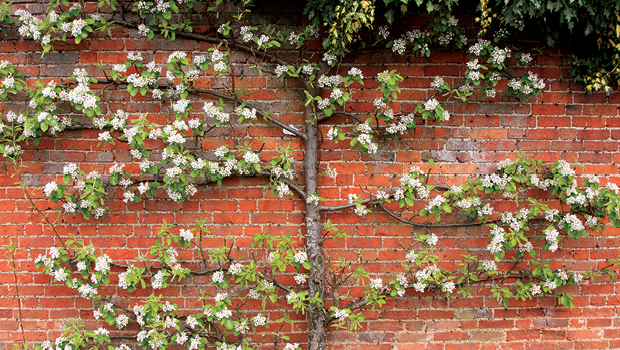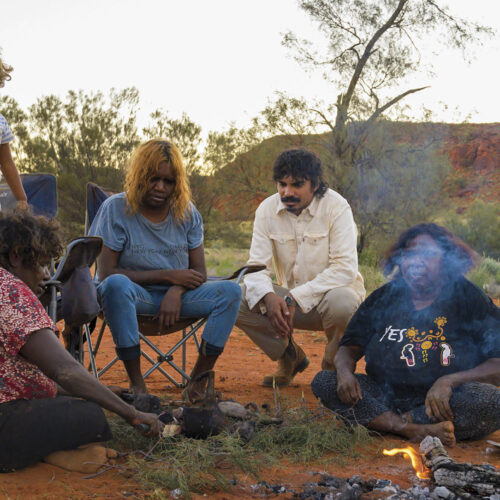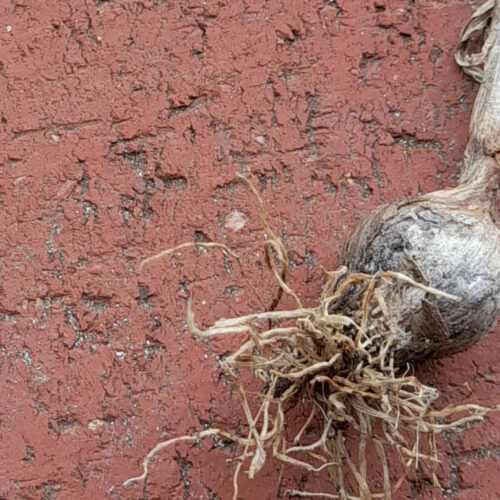Simple espalier technique
2017-04-26T05:43:34+10:00
Justin Russell shows you a simple espalier technique, perfect for small-space growing, plus his top 10 trees for training.
Trained trees
One of the issues with growing fruit in small spaces is the footprint the tree occupies at ground level. Most small gardens will have some vertical height available for a tree to fill, but ground space might be limited to just half a square metre or less. The solution to this dilemma is to shape trees to grow vertically, while severely restricting their horizontal growth.
The most restricted training form available is the cordon. This is just a single stem, with very short side branches that bear fruit. It is best used on apples, pears, currants, gooseberries and other trees that form long-lived fruiting spurs.
A more expressive form of training is espalier. Dozens of different patterns can be used, from very small ‘stepover’ apples trained to a 50cm-tall ‘T’ shape, to multiple T espaliers that consist of a series of T shapes stacked on top of each other. Because the branch arms become a permanent part of the tree structure, espalier training ideally suits spur-forming varieties such as apples, pears and plums.
Fan (or palmette) training is a technique suited to larger-growing trees and those that don’t produce fruiting spurs. The shape resembles a Japanese rice-paper fan, or a hand with outstretched fingers. The palm of the hand represents the trunk of the tree, with each finger representing a branch. Fan training works well for figs, peaches, cherries, nectarines, quinces, citrus, olives, persimmons, pomegranates, as well as the spurs described above.
Simple espalier technique
This design uses posts about 2m apart and 2m tall with wires 90cm and 180cm high and dwarf trees. Adjust as needed for non-dwarfing varieties. The following is based on illustrations and system by Bob Magnus. (Illustrations by Cheryl Orsini)
1. String rows of wire against your wall (at least 30cm apart). Plant tree in a central position and cut growth below the bottom wire. In the first year, trees should put out good growth.
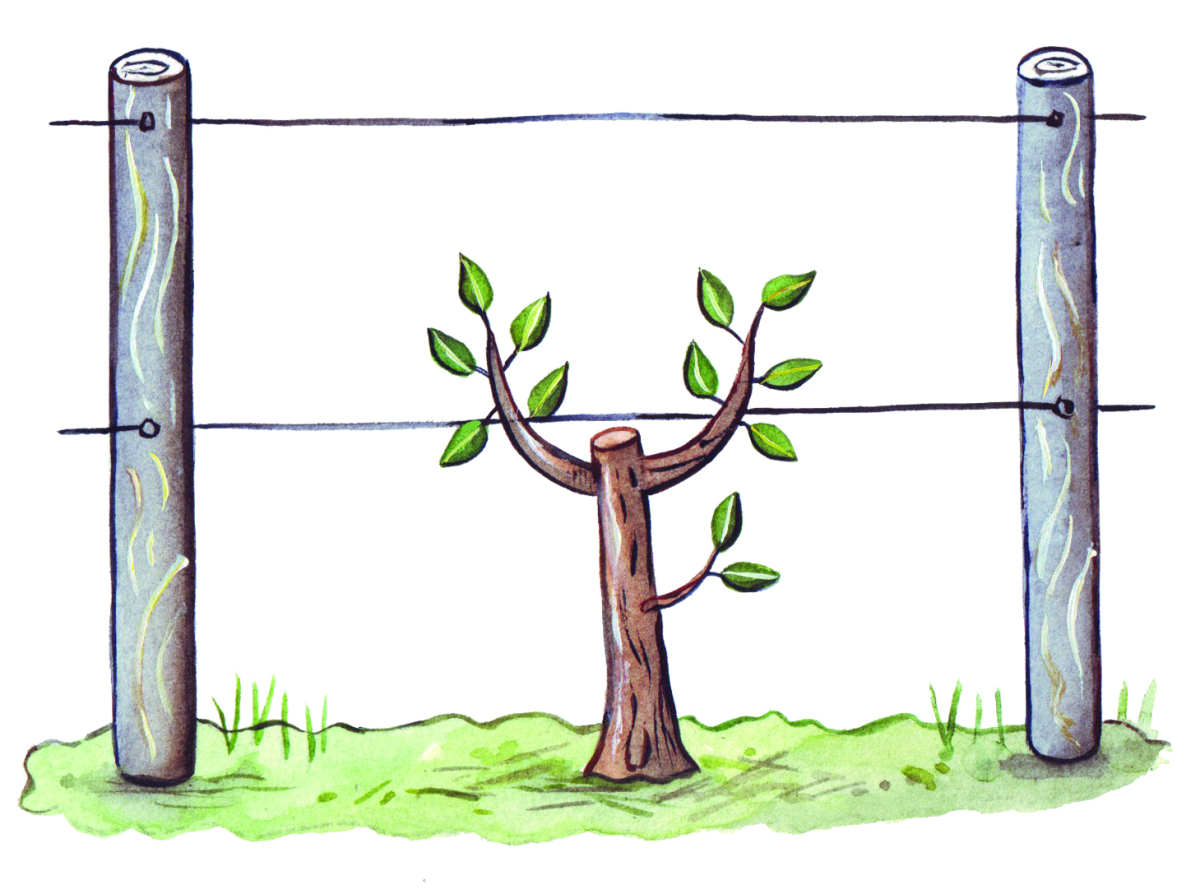
2. Cut all growth except the top two strongest shoots, which are tied to the bottom wire.
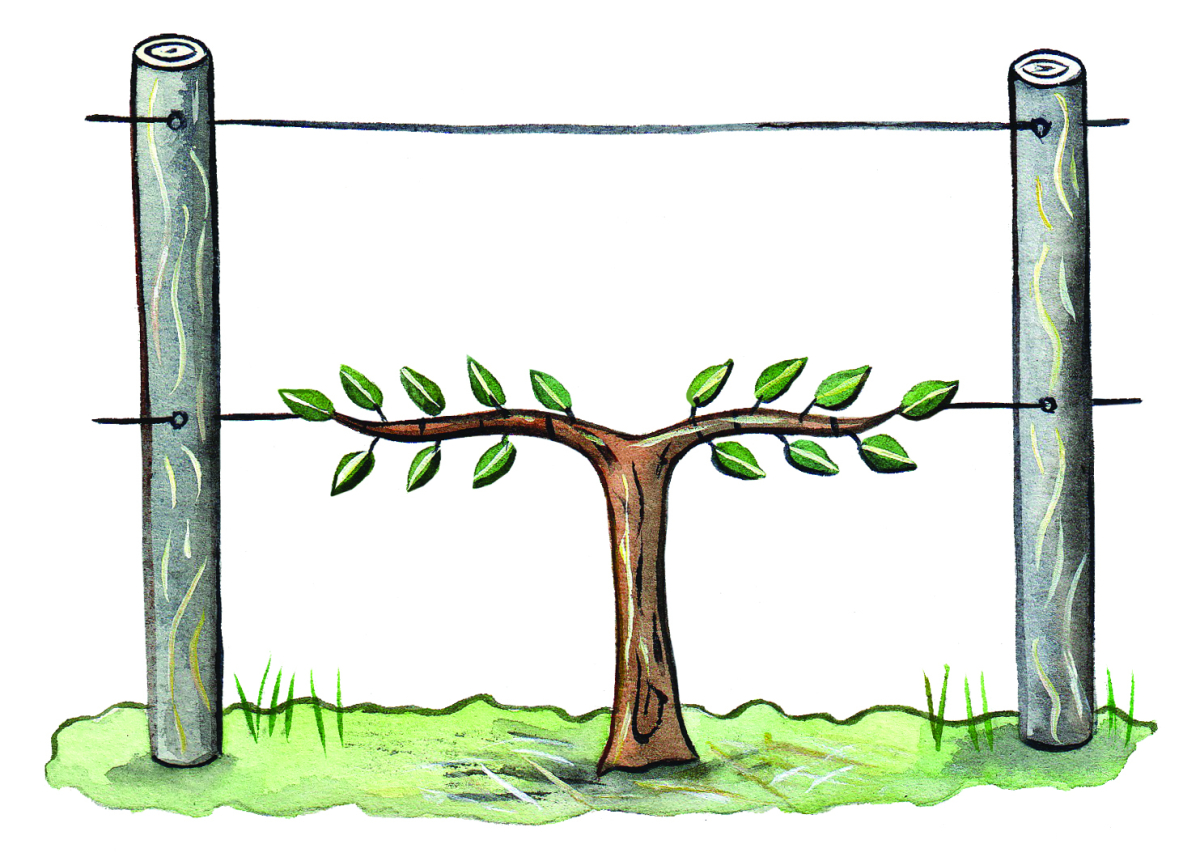
3 & 4. Tie tips down and cut away all growth except one central upright that grows to the next wire. Repeat process in following years: tie tips down and cut upright growth.


4. Maintain by cutting upright growth in subsequent years. Mature fruit is easily netted.
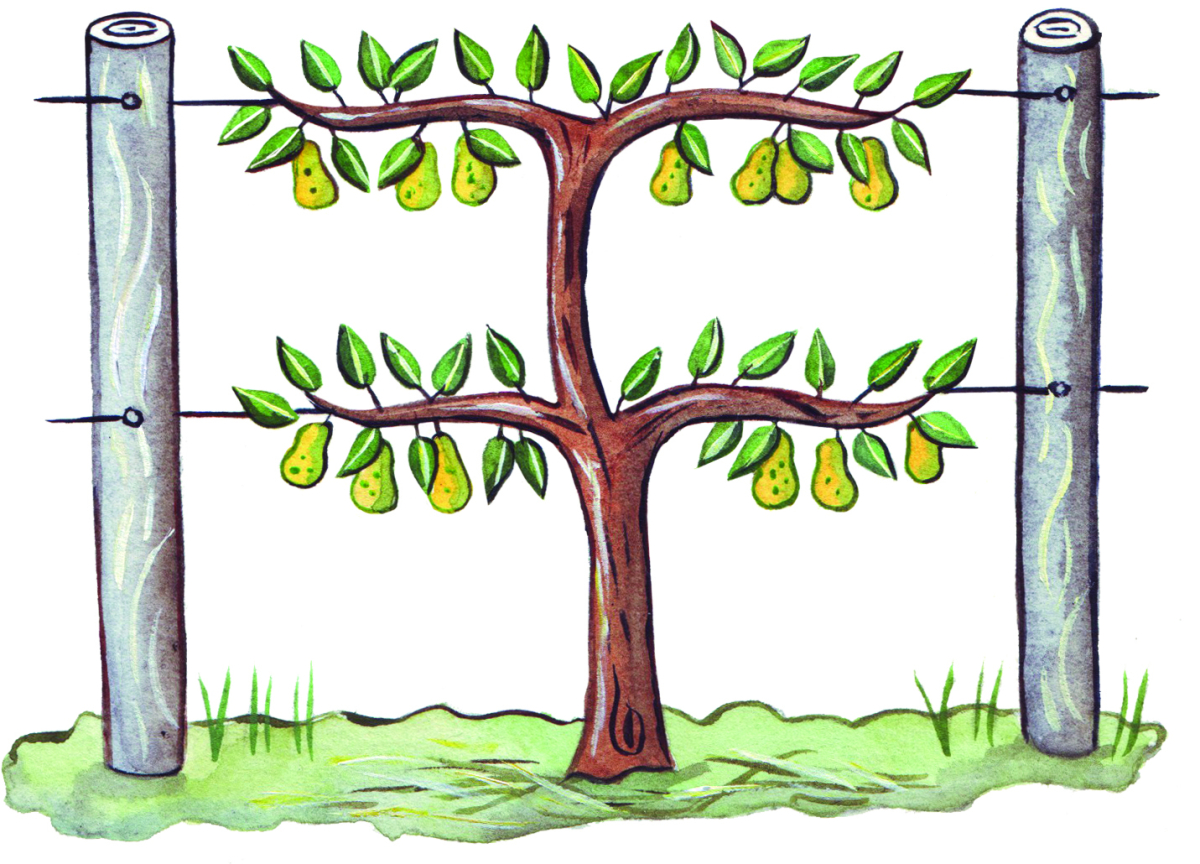
Top 10 fruit tree choices for training
- Apples and pears: Espalier, cordon, fan training and stepover.
- Apricots: Fan training.
- Citrus: Fan training.
- Currants and gooseberries: Espalier, cordon and fan training.
- Figs: Fan training.
- Peaches and nectarines: Fan training.
- Plums: Fan training.
- Sapote: Fan training and espalier.
- Sweet and sour cherries: Fan training.
- Tamarillo: Fan training
For more on growing in small spaces grab a digital copy of ABC Organic Gardener Essential Guide: Urban Farming available here.

